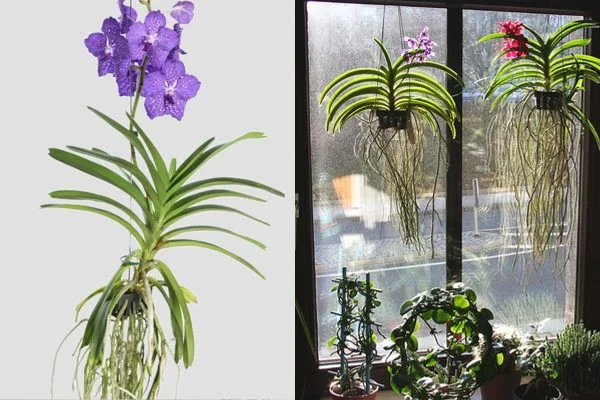Suspended and Soil-Free Orchid: Here’s How to Cultivate It!
The Vanda Orchid is native to China, India, Indonesia, Australia, and Malaysia. There are 80 species of this plant, and it’s often cultivated suspended in the air.
This Monopodial Orchid grows with roots emerging from the base and a single stem. The leaves grow in pairs, and as they mature, they branch out. If left undivided, they can live for a very long time and reach lengths of 1.5 – 2 meters.
For the best care tips, keep reading.
Care: If you’re new to gardening, the Vanda Orchid might not be the best starting point. This plant needs plenty of air, humidity, light, and a warm environment. It requires frequent watering, especially in warmer periods, often needing it twice a day. However, in winter, when cultivated suspended, you should immerse the roots in water for 5 minutes.
It’s essential to fertilize the plant once a week during its growth period and expose it to direct sunlight and intense light for many hours. However, it’s best not to expose it aggressively to sunlight but filter it through a light and thin curtain.
Diseases and Pests: Vanda Orchids are extremely delicate and sensitive plants. The main causes of their death are inadequate watering, or too much watering. Excessive water could cause blisters on the flowers and slow growth. The leaves could rot and wither, making the roots too soft. Excessive exposure to sunlight could turn the leaves red or yellow. On the other hand, insufficient sunlight exposure could lead to weak growth and unhealthy plants.
Grown in Air: The Vanda Orchid is cultivated in the air due to its large and robust roots, which are difficult to contain in a pot. This plant doesn’t grow in the ground like others; it is primarily epiphytic, meaning it has the unique ability to attach its roots to the plant’s surface to obtain the necessary nutrients and moisture.
As mentioned at the beginning, it’s not an easy plant to care for, but you’ll find it’s worth the effort.



